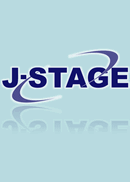Volume 41, Issue 2
Displaying 1-23 of 23 articles from this issue
- |<
- <
- 1
- >
- >|
-
2003Volume 41Issue 2 Pages 37
Published: March 15, 2003
Released on J-STAGE: December 11, 2012
Download PDF (118K) -
2003Volume 41Issue 2 Pages 38
Published: March 15, 2003
Released on J-STAGE: December 11, 2012
Download PDF (205K) -
2003Volume 41Issue 2 Pages 39-40
Published: March 15, 2003
Released on J-STAGE: December 11, 2012
Download PDF (228K) -
2003Volume 41Issue 2 Pages 41-42
Published: March 15, 2003
Released on J-STAGE: December 11, 2012
Download PDF (244K) -
2003Volume 41Issue 2 Pages 44-46
Published: March 15, 2003
Released on J-STAGE: December 11, 2012
Download PDF (431K) -
2003Volume 41Issue 2 Pages 48-49
Published: March 15, 2003
Released on J-STAGE: December 11, 2012
Download PDF (573K) -
2003Volume 41Issue 2 Pages 52-53
Published: March 15, 2003
Released on J-STAGE: December 11, 2012
Download PDF (620K) -
2003Volume 41Issue 2 Pages 56-57
Published: March 15, 2003
Released on J-STAGE: December 11, 2012
Download PDF (442K) -
2003Volume 41Issue 2 Pages 60-61
Published: March 15, 2003
Released on J-STAGE: December 11, 2012
Download PDF (656K) -
2003Volume 41Issue 2 Pages 64-66
Published: March 15, 2003
Released on J-STAGE: December 11, 2012
Download PDF (726K) -
2003Volume 41Issue 2 Pages 69-69,71
Published: March 15, 2003
Released on J-STAGE: December 11, 2012
Download PDF (160K) -
2003Volume 41Issue 2 Pages 74-77
Published: March 15, 2003
Released on J-STAGE: December 11, 2012
Download PDF (1142K) -
2003Volume 41Issue 2 Pages 80-81
Published: March 15, 2003
Released on J-STAGE: December 11, 2012
Download PDF (418K) -
2003Volume 41Issue 2 Pages 84-85
Published: March 15, 2003
Released on J-STAGE: December 11, 2012
Download PDF (293K) -
2003Volume 41Issue 2 Pages 90-90,95
Published: March 15, 2003
Released on J-STAGE: December 11, 2012
Download PDF (1468K) -
2003Volume 41Issue 2 Pages 129-136
Published: March 15, 2003
Released on J-STAGE: December 11, 2012
Download PDF (11889K) -
2003Volume 41Issue 2 Pages 137-143
Published: March 15, 2003
Released on J-STAGE: December 11, 2012
Download PDF (1188K) -
2003Volume 41Issue 2 Pages 144-149
Published: March 15, 2003
Released on J-STAGE: December 11, 2012
Download PDF (802K) -
2003Volume 41Issue 2 Pages 150-155
Published: March 15, 2003
Released on J-STAGE: December 11, 2012
Download PDF (3011K) -
2003Volume 41Issue 2 Pages 156-161
Published: March 15, 2003
Released on J-STAGE: December 11, 2012
Download PDF (856K) -
2003Volume 41Issue 2 Pages 162-169
Published: March 15, 2003
Released on J-STAGE: December 11, 2012
Download PDF (3039K) -
2003Volume 41Issue 2 Pages 170-176
Published: March 15, 2003
Released on J-STAGE: December 11, 2012
Download PDF (3059K) -
2003Volume 41Issue 2 Pages 177-189
Published: March 15, 2003
Released on J-STAGE: December 11, 2012
Download PDF (1920K)
- |<
- <
- 1
- >
- >|
